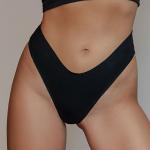Unwanted hair shouldn’t run your routine. Our medical-grade Alexandrite and Nd:YAG lasers target the hair follicle with precision while protecting your skin - from fair to deep tones. Expect long-lasting reduction, fewer ingrowns and a calmer complexion over time.
Book your patch test to get started. Pricing below.
The Benefits of Our Lasers
- Inclusive technology for a wide range of skin tones (Alexandrite & Nd:YAG).
- Medical grade: faster results with most people seeing an 80% reduction in 6 treatments.
- Comfort: Precise cooling helps you feel calm and comfortable during treatment.
- Time back: move from constant shaving/waxing to annual maintenance.
How Laser Hair Removal Works
Laser light is drawn to pigment in the hair, heating and disabling the follicle so it can’t grow as before. Because hair grows in cycles, a course of treatments is needed to catch each follicle at the right stage. Most people plan 6–8 sessions, typically spaced 4–6 weeks apart.

Before and After
Your Laser Hair Removal Plan
Step 1: Is Laser Right for You?
At your patch test we check your skin, hair and medical history, then agree a plan that suits your goals, skin tone and schedule. We’ll set expectations on results and spacing between sessions.
When we won’t treat
For safety, we won’t proceed if any of the following apply: pregnant or breastfeeding; active psoriasis or vitiligo in the area; recent Roaccutane (within 6 months); a tan or tattoo on the area. We’ll advise when it’s safe to continue.
Step 2: Get Ready
- 4 weeks prior: Avoid tanning area to be treated (including self-tan products) - these increase the risk of burns and hypopigmentation.
- 1–2 days prior: Shave before your appointment (avoid waxing or plucking - you need those follicles intact for the treatment to work).
- On the day: Skip applying skincare products and perfumes to treatment area. Wear loose clothing around areas to be treated.
Step 3: Time to Laser
We will prep the area, make sure your skin’s safe to treat, and give you protective goggles. Our lasers have cooling tech built in to keep things comfy. You might feel a light snapping sensation, but most people say it’s totally bearable.
Step 4: Post-Treatment Care
After your session, your skin might feel a bit warm or look a little pink, like a mild sunburn. No biggie - we will apply some soothing aloe vera gel and it’ll calm down within 24 hours. Aftercare instruction are explained and emailed to you.
Which is better laser or IPL hair removal?
Lasers use a single, targeted wavelength for better follicle absorption - typically more efficient and more comfortable. IPL is broad-spectrum and less selective, so it usually needs more sessions to match results.
Which is better laser or electrolysis hair removal?
For most people with dark or pigmented hair, laser is the better first choice: it’s faster, covers large areas efficiently and is usually more comfortable than electrolysis.
Electrolysis suits white, grey and very fair hairs that lasers can’t target, but it treats hairs one-by-one, so it’s slower and often more time-consuming (and therefore pricier).
Are our lasers safe for darker skin tones?
Yes. We use Nd:YAG settings that are kinder to melanin-rich skin; this may mean more sessions, but safety and outcomes come first.
I have PCOS and facial hair - will laser help?
Yes. Laser reduces growth and ingrowns, but hormones can drive regrowth. Many patients choose periodic maintenance. We’ll talk through realistic outcomes at your consult.
Can I have bikini laser on my period?
Yes - a tampon is fine. However, if you’re more sensitive that week, we recommend you reschedule.
Can I go to the gym or swim after laser?
Avoid gym, sauna and swimming for 48 hours to let the skin settle. Use SPF on exposed treated areas.
Bikini Laser Hair Removal
Which bikini styles do you laser?
Whatever suits you: Bikini line, Extended/High, Brazilian (leaves a strip/triangle), or Hollywood (all hair removed). We’ll confirm the shape at your appointment.
Is the perianal area included?
Yes, we routinely include perianal with Brazilian/Hollywood packages for a smooth, even result.
Who will treat me - can I request a female clinician?
All our laser treatments are performed by trained female aestheticians. Modesty is respected with appropriate draping when requested.
Male Laser Hair Removal
Which areas are most popular for men?
Most of our male customers choose Back & Shoulders, Chest & Naval, Scalp & Back of Neck or Jawline & Front of Neck to deliver a sharp beard line.
What happens if I can't shave the area to be treated?
Ideally a partner will shave the area to be treated the day before - as this provides greater comfortable during treatment. But if this is not possible our aesthetician will trim the hair with an electric razor and then shave prior to laser treatment.
Related articles

Stop Shaving. Start Saving Laser Hair Removal that’s Better for You and the Planet
Ready for smoother, fuzz-free skin with less hassle? Laser hair removal not only saves you time and money but also helps reduce your environmental footprint.

Laser Hair Removal: How to Get the Best Results
How to get the best results with your laser hair removal treatment plan. Including perfect preparation and aftercare. Plus what to tell your practitioner.

Breaking the Taboo of Bikini Laser Hair Removal
The unmentionables of bikini laser hair removal which many are too afraid to ask - bikini hair styles, pants on or off, and how periods affect treatments.
Edinburgh Laser Hair Removal Pricing
Picture yourself confidently rocking whatever outfit you want - no razor burn, no stubble, no stress. Start you journey by booking your patch test.
| Area | Single £ | PKG 6 £ |
|---|---|---|
| Patch Test | £40 | - |
| Upper Lip & Chin | £85 | £425 |
| Jawline & Front of Neck | £95 | £475 |
| Bikini (any style) & Perianal | £120 | £600 |
| Bikini (any style) & Perianal & Underarms | £140 | £700 |
| Bikini (any style), Perianal & Inner Thighs | £160 | £800 |
| Face & Front of Neck | £140 | £700 |
| Scalp & Back of Neck | £140 | £700 |
| Arms | £120 | £600 |
| Underarms | £85 | £425 |
| Back & Shoulders | £140 | £700 |
| Back & Buttocks | £160 | £800 |
| Chest & Naval | £140 | £700 |
| Legs (half or full) | From £95 | From 475 |
Terms and Conditions
- UK requirement: If you haven’t had laser in the last 6 months, you’ll need a safety patch test redeemable against any package.
- Value: All packages include 6 treatments for the price of 5.
- Terms: Packages are valid for 12 months and non-transferable. If you cancel, your refund equals the package price minus any treatments taken at full price and the consultation fee.
Treatment practitioners

Laser & IPL Treatments for Redness & Pigmentation
Laser & IPL treatments for pigmentation, facial redness, red patches, spider veins, & broken capillaries.



